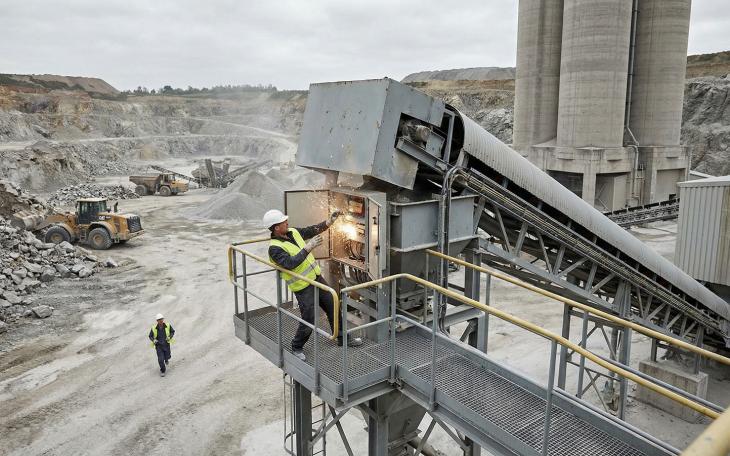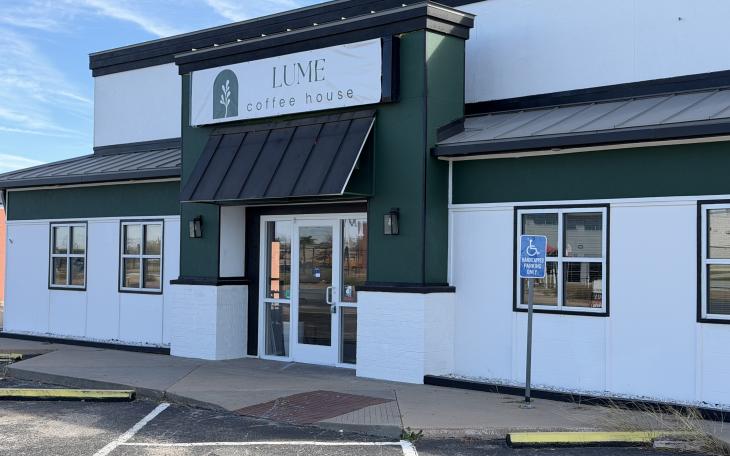City Councilman Don Vardeman took aim at the budget of the City of San Angelo Development Corporation (COSADC) Tuesday, targeting the budget as a possible source to fund the Council’s desire to rehabilitate the streets on a pay-as-you-go basis. COSADC proponents say that Vardeman’s proposal would gut future projects of the economic development arm of the city.
Just about every city in Texas has an economic development effort. The state of Texas allows municipalities like San Angelo to dedicate 0.5 percent of the sales tax towards economic development projects if the voters approve a ballot initiative authorizing it.
Sales tax collected just about everywhere in Texas is 8.25 percent. Of that, 6.25 percent goes to the state of Texas. In Tom Green County, 0.5 percent goes to the County government, and the remaining 1.5 percent is sent to the City. State law does not allow a sales tax rate that exceeds 8.25 percent.
From the City’s 1.5 percent share, San Angelo voters approved dedicating 0.5 percent of it to fund COSADC in 1999, leaving the remaining 1 percent in the general fund.
In the 2010 renewal of the half-cent sales tax initiative by voters, two ways to spend the money were approved. In brief, the funds can pay for what the City calls “ballot projects” like the improvements made to the Concho River banks near downtown recently, new buildings for the stock show and rodeo at the fairgrounds, and paying a portion of the debt service to the Hickory water project. The other approved expenditure can go towards recruiting new businesses to San Angelo, promoting the City’s tourism, and etc., in addition to the COSADC payroll and operations expenses as dictated in a contract with the City.
Vardeman’s proposal is to dedicate 0.125 percent of the 8.25 percent sales tax, taken out of COSADC’s half-cent sales tax entitlement, to fund streets for the next four years. The effect of this would redirect approximately half of COSADC’s discretionary funds, meaning funds not already spoken for by current ballot projects, towards street maintenance during the term.
Vardeman's idea will require a ballot initiative in November.
How this is calculated
Assistant City Manager and CFO Michael Dane explained to Council Tuesday that Vardeman’s proposal would reduce COSADC funding by approximately $650,000 to $800,000 based upon current sales tax receipts.
Dane explained that COSADC’s revenue from the half-cent sales tax today is approximately $2.15 million. Of that, 72 percent is spoken for. That is, the COSADC is required to finance current ballot projects and pay a portion of the Hickory bond payments. That leaves $1.55 million for operations overhead, industry recruitment, and whatever new projects COSADC decides to finance.
Vardeman’s proposal would redirect about half of that $1.55 million towards streets.
Vardeman said that sales tax revenue projections show receipts increasing rapidly, and since his proposal is for a percentage of the overall sales tax to be cut from COSADC’s percentage and redirected to street repairs, the actual dollars cut from COSADC’s budget may not be as severe as Dane projected.
Streets Need $77 Million to Fix
City Manager Daniel Valenzuela said that getting all of San Angelo’s streets into shape is a seven-year, $9 million to $11 million per year proposition, or $63 million to $77 million total.
Redirecting COSADC’s sales tax receipts will yield less than 10 percent towards that amount.
Dane agreed. “This [0.125 percent sales tax] is not going to solve all of our street problems. We’re going to have to bring multiple weapons to the front to conquer this problem,” Dane said.
Council discussed with staff that the Council had already approved spending $1.7 million on streets from the general fund this year, made more flush from record sales tax receipts.
Mayor Dwain Morrison expressed support for Vardeman’s proposal.
Councilwoman Charlotte Farmer was against it. “I’m not in favor [of] messing with the half-cent sales tax that the voters have already approved and it’s set. I am in favor of finding monies to work on our streets immediately because the pay-as-you-go is not working,” Farmer said.
Councilman Johnny Silvas said, “I hate to wait until November. I wish we were in November already.” He was referring to the earliest day of an election for voters to approve the ballot initiative.
Where the City gets more money will be an ongoing discussion and debate. Dane did not rule out researching using a bond to finance street repairs. However, Councilman Rodney Fleming has stated that he wants to see alternatives that do not include going into debt to fix the streets first.
Reaction
Matt Lewis, who heads the San Angelo Area Foundation today, was once the head of COSADC. His concern was that the money gained from cutting the COSADC budget would not be near enough to solve the street maintenance and repair problem. Then, at the end of the four-year fund redirection, Lewis said, San Angelo would be left with no viable economic development program and the competitive disadvantages with other cities that come with that, and the streets will still be in the same relatively poor shape that they are in today.
Phil Neighbors, President of the San Angelo Chamber of Commerce echoed Lewis’ concerns:
“The Chamber is anxious to see the options that city staff will bring back for consideration. Although we share a strong interest in catching up on street improvement and maintenance, the Chamber leadership wants to see what possibilities exist for accomplishing those street improvements.
“A potential concern we have about the Street Maintenance Sales Tax is that if $650,000 - $800,000 is removed from COSADC's budget, that the economic development programs and support for existing and prospective employers will be greatly reduced. That is troubling in light of the strategic goals being supported by these programs, and because San Angelo is underfunded in its economic development expenditures already in comparison to similar-sized benchmark cities in Texas.
Council instructed city staff to provide a ballot initiative to vote upon by the next meeting. If the Council approves it, San Angelo will vote to approve or disapprove funding COSADC with 0.375 percent and street repair with 0.125 percent of the 8.25 percent sales tax in November.
Analysis
If the vote were held today, the chances are probable that Council will approve the ballot initiative. For: Morrison, Silvas, Vardeman; Against: Farmer; Swing votes: Marty Self appeared skeptical; Fleming wants more options before he decides; Wardlaw was absent, but Wardlaw has never expressed support for economic development in the past.
Silvas and Fleming are facing opposition in the May 10 election and may not be on Council the next meeting. Wardlaw is retiring and will be replaced by Liz Grindstaff or Phil Skinner. Odds are that Grindstaff will be a vocal proponent of COSADC. Silva's seat, whoever occupies it, will favor streets over COSADC. The Fleming vesus Aquirre contest is a toss-up.
Of course, the mayor can call for a special meeting before the May 20 swearing in of new members if it starts looking like he doesn't have the votes to pass this with the new members.
Four votes are needed for this to pass.
If the measure goes to the voters in November, there are not enough vocal proponents of the benefits of COSADC, and financing of incentives to large companies to move here, to fight a populist argument about fixing the streets. Our prediction is that voters will approve this kind of measure overwhelmingly.
Also, see the 10 Worst Streets in San Angelo.
Subscribe to the LIVE! Daily
Required





Comments
Listed By: A M
- Log in or register to post comments
PermalinkListed By: Phil Skinner
- Log in or register to post comments
PermalinkListed By: Joe Blow
- Log in or register to post comments
PermalinkListed By: Bill Richardson
- Log in or register to post comments
PermalinkListed By: Paul Alxander
- Log in or register to post comments
PermalinkListed By: Bill Richardson
- Log in or register to post comments
PermalinkListed By: Jim Turner
- Log in or register to post comments
PermalinkListed By: Joe Hyde
They practically have the votes: Morrison, Silvas, Vardeman are for. One more is all they need. And if it's on the ballot, it has a very good chance to pass.
Also, from my understanding, Dane said that all of the ballot projects, including Hickory contributions (not all of Hickory, just COSADC's contracted piece of it) are covered by 72% of COSADC's existing revenue intake.
- Log in or register to post comments
PermalinkListed By: Jim Turner
- Log in or register to post comments
PermalinkListed By: Jim Turner
- Log in or register to post comments
PermalinkListed By: Jim Turner
- Log in or register to post comments
PermalinkListed By: Johnson Brown
- Log in or register to post comments
PermalinkListed By: Jim Turner
- Log in or register to post comments
PermalinkPost a comment to this article here: